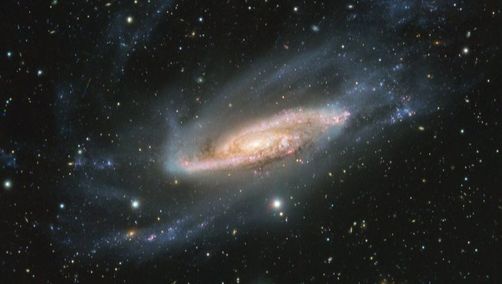The ESO time allocation committee is called the Observing Programmes Committee or the OPC for short. It consists of 4 science categories: A) Cosmology and Intergalactic Medium; B) Galaxies; C) ISM, star formation and planetary systems; and D) Stellar evolution. When you submit a proposal you will specify which science category you are applying in. Each category has 2-4 panels consisting of 6 people each. Of the 6 people, one is the panel chair. While the panels are designed to provide an expert opinion on your science, the overarching categories are broad so proposals should still be written for a general astronomical audience. For example, the A scientific category encompasses studies focused on dark matter, gravitational lensing, Lyman alpha clouds, redshift surveys, and reionisation, among other topics. A good test is to have a PhD student read your proposal and identify any aspects of the science rationale that they don’t understand.
Before the OPC panels meet, panel members are given between 40-100 proposals to read. Each proposal will be read by 3-6 panel members with one panel member being assigned as a primary reader responsible for leading discussions at the meeting and aggregating the feedback of other panel members to send back to the proposer. The panel members are required to read, grade, and provide comments for each proposal. ESO normalises each panel member’s grades to account for differences between grade distributions. An initial average grade is then given to each proposal and the proposals are ranked in order. The cumulative requested time per telescope is calculated, and a triage line is drawn when this exceeds 70% of the total requested time on that telescope.
At the 2 day OPC panel meetings in Munich we discuss each non-triaged proposal and confidentially re-grade the proposal. Immediately after the meeting the primary readers provide ESO with feedback on each proposal to be sent to the PI. At this stage we do not know what proposals will be allocated time as we do not see the final ranking of proposals across all science categories. We also do not see the results of feasibility and scheduling constraints. The comments are based purely on how we graded the science of our subset of proposals.
ESO then makes a final ranking from combining the grades from all the panels. Feasibility and scheduling is checked to calculate which proposals will likely be able to be completed within the Period. Finally the proposers are notified and sent comments on their proposals.
A “To Do” list for ESO proposals
Do ask a colleague to read your proposal! All feedback is helpful.
Do be clear. Outline your idea, what you are asking for, why you are asking for it, and what will result from these observations. Although space is limited, be repetitive! When reading many proposals it is helpful to not have to spend time thinking “what instrument are they proposing for again?”
Do use structure to organise your ideas and improve readability. This includes using LaTeX tricks (e.g. smallskip) to add space between paragraphs, using bold, italic, or underlining to highlight one or two key statements, or to create additional section headings (e.g. “Sample and feasibility”).
Do avoid vague statements. Reread your proposal to check you haven’t used the word “properties” too many times. For example, instead of saying “with this data we will measure the physical properties of Lyman alpha emitters” say “with this data we will measure the metallicity, size, and rotational velocity of Lyman alpha emitters.” Other vague statements to avoid include “can be studied”, “to understand better”, “provides information”.
Do make informative figures. If your figure is an image include a compass, scale bar, and field-of-view of the instrument you are proposing for. If you have difficulties formatting your figures, put them all together in Powerpoint or Keynote with captions and export it as a pdf that can then be imported into LaTeX.
Do use all the boxes provided, especially:
- Box 5, “Special remarks”: This curious box can be used for anything! Some good examples are mentioning if this is a resubmission of a previous proposal, or providing additional information on schedulability, e.g. full nights vs. half nights, or why you haven’t included target positions.
- Box 8a, “Telescope Justification”: Use this box to reassure the argumentative astronomer that this is the right telescope/instrument for your science. For example if you are observing a cluster of galaxies to determine redshifts justify why you need MUSE vs. FLAMES.
- Boxes 9 and 10, “Use of ESO facilities during the last 2 years” & “Publications related to the subject during the last 2 years”: These apply to both the PI and Co-Is. If you have relevant experience from 3 or even 4 years ago it is worth including. If you think it may be relevant then include it!
- Boxes 9a and 9b, “ESO Archive” & “GTO/Survey duplications”: It will only take a few minutes to check these and it is a sign of respect to do so.
- Box 11, “List of targets”: You can use this section to justify your targets, especially if you ran out of space in the main text of the proposal. You can even include a table with additional relevant information if needed. But at the very least include your targets and provide specific details on how you have filled in the ‘ToT’, ‘Diam’, and ‘Mag’ columns. For instance does the time on target include overheads? What band is the diameter measured from? Is it in arcsec or arcmin? What band is the magnitude measured in? Is it in AB or Vega mag?
- Boxes 12 and 13, “Scheduling requirements” & “Instrument configuration”: Unlike with Keck, a successful ESO proposal is binding. You are not readily allowed to change targets, observing time, or instrument set-up. To do so you will need to apply to ESO with good reason well in advance of your observations. This is to avoid duplications and ensure that the telescopes are being used to complete the programs that were peer reviewed and accepted. So do plan ahead and check your targets and feasibility before you submit a proposal.
Do ask for help! This month there are ESO staff who are dedicating their time to answering users’ questions. You should expect a response within 2 days. But check the Call for Proposals first. It has a lot of valuable information!
Final advice
Don’t be too discouraged if you don’t get time for your proposals. ESO time is highly competitive with some instruments having oversubscription rates comparable to HST. The best action is to try again! I have had the same proposal ranked A, B, and C (top, middle, and bottom rank) in three different Periods. And remember the peer-review process is imperfect but it is currently what we have. The head of the ESO Observing Programmes Office has even written a paper on the topic!

